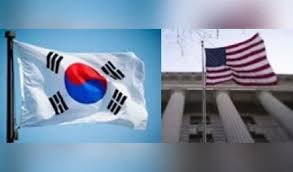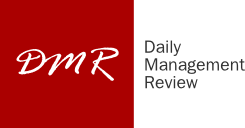
South Korea’s freshly appointed trade team pulled off a last-minute victory in Washington this week, locking in a $350 billion investment package and averting punitive U.S. tariffs that threatened to hit Seoul’s export-driven economy. With little more than weeks on the job following President Lee Jae Myung’s snap election win in June, Industry Minister Kim Jung-kwan, Finance Minister Koo Yun-cheol and Trade Minister Yeo Han-koo adopted an unconventional approach to tame former President Donald Trump’s famously mercurial negotiating style. They role-played Trump’s terse delivery, heeded advice to lavish praise, and mapped out dozens of possible exchanges—efforts that ultimately smoothed the path to agreement.
The deal, announced on July 30, settles the United States’ threatened imposition of a 25 percent reciprocal tariff on South Korean exports—slashed instead to a 15 percent levy in return for Seoul’s commitment to invest heavily in U.S. assets. Trump, who publicly confirmed the pact on his social media platform shortly before his self-imposed August 1 deadline, hailed the accord as a “full and complete” settlement and underscored his personal role in selecting the investments. For South Korea, whose free-trade agreement with the U.S. dates back to 2012 and underpins some 25 percent of its GDP in bilateral commerce, the stakes could not have been higher.
Preparing for Trump’s Unpredictability
The South Korean delegation arrived in Washington knowing that conventional briefing books and typical diplomatic protocols might fall short against Trump’s direct, off-the-cuff tactics. “We practiced how to speak like President Trump,” Industry Minister Kim told reporters, noting that each member took turns portraying the U.S. president in mock exchanges. “President Trump’s way of talking is very terse and straightforward. We ran through scenarios on how he might challenge us and how to respond concisely.”
Privately, the team operated under strict guidance to avoid overly technical jargon. They solicited tips from veteran diplomats and even corporate negotiators who had faced Trump in prior talks—advice ranged from keeping sentences to no more than 10 words to beginning each statement with a compliment, such as calling him a “great person.” The ministers also incorporated lessons from South Korea’s 2018 trade talks with the European Union, where similar role-playing and rapid-fire response drills helped clinch tariff reductions on semiconductors and auto parts.
Their preparations extended beyond language. South Korea’s negotiators conducted parallel simulations on currency — a sensitive issue given U.S. concerns over won manipulation — and agreed in April to establish a dedicated channel between finance officials to consult on foreign-exchange policy. This back-channel, set up months before the Washington rendezvous, enabled both sides to diffuse tensions over alleged currency “undervaluation” without derailing the tariff discussions.
High-Stakes Bargaining on Tariffs and Investments
The formal meeting unfolded in the Oval Office for roughly 30 minutes, though final touches spilled into a series of lower-level consultations. South Korea knew that Trump would frame any deal around headline figures—hence the emphasis on a round $350 billion investment commitment. Finance Minister Koo Yun-cheol said the two teams volleyed back and forth on the precise scale and scope of the fund, which ultimately will flow into a mix of U.S. infrastructure projects, advanced manufacturing plants and technology partnerships.
To bolster their hand, Seoul’s officials shadowed parallel negotiations Trump was conducting with Japan and the European Union, gleaning insights into his evolving cap on tariffs—down from his initial 25 percent threat to a uniform 15 percent for the bloc of Indo-Pacific allies. They also reminded the American side of South Korea’s own market-opening measures under the 2012 U.S.-Korea Free Trade Agreement, which abolished nearly all industrial tariffs and boosted U.S. auto and agricultural exports. By framing the new deal as an extension of established commitments rather than a radical overhaul, the Korean team reduced the political risk for Trump to tout the outcome as part of his “America First” agenda.
Behind the scenes, negotiators leveraged Washington’s broader economic concerns—ranging from semiconductor supply chains to critical mineral access—to secure assurances that certain key exports, such as chips and electric-vehicle batteries, would remain largely tariff-free. They also flagged Seoul’s planned integration into U.S.-led clean-energy alliances, noting South Korea’s recent $21 billion pledge to build five new nuclear reactors domestically—a move that dovetails with U.S. interests in advanced reactor technologies.
Navigating Sensitive Agricultural Issues
Perhaps the trickiest segment of the talks revolved around beef and rice imports. U.S. officials pressed Korea to lift its restriction on beef from cattle older than 30 months—rules put in place after mad cow disease scares triggered massive protests in 2008. Trade Minister Yeo Han-koo defused the matter by presenting photos and data illustrating the scale of those protests, emphasizing the political impossibility of a sudden policy reversal. “We understand the importance of American beef to U.S. farmers,” Yeo told his counterparts, “but we must also respect our citizens’ food-safety concerns.”
In return, Seoul offered modest increases in soybean and corn purchases, framing them as part of a broader energy-and-agriculture package that included a separate commitment to buy at least $100 billion of U.S. liquefied natural gas over the next five years. This edge-in energy contract not only sweetened the deal for Trump’s base in key swing states but also aligned with South Korea’s urgent quest to diversify away from Russian gas following ongoing geopolitical uncertainties.
Although the agreement stops short of fully dismantling Korea’s sensitive market protections—Seoul refused to expand rice import quotas or lift all livestock restrictions—it furnishes Trump with a narrative victory: a headline tariff reduction coupled with a massive U.S. investment pledge. For Lee Jae Myung, it marks an early diplomatic success that may bolster his domestic standing ahead of crucial legislative battles in Seoul.
As both governments prepare for a bilateral summit scheduled within weeks, South Korea’s negotiators already are debriefing their counterparts in Tokyo and Brussels, eager to refine their playbook for engaging Trump’s successors. Their Washington triumph demonstrates that, even against one of the world’s most unpredictable leaders, meticulous role-playing, streamlined messaging and strategic empathy can tip the scales in favor of careful diplomacy—securing not just headlines, but a pact that underwrites the economic pillars of two enduring allies.
(Source:www.channelnewsasia.com)
The deal, announced on July 30, settles the United States’ threatened imposition of a 25 percent reciprocal tariff on South Korean exports—slashed instead to a 15 percent levy in return for Seoul’s commitment to invest heavily in U.S. assets. Trump, who publicly confirmed the pact on his social media platform shortly before his self-imposed August 1 deadline, hailed the accord as a “full and complete” settlement and underscored his personal role in selecting the investments. For South Korea, whose free-trade agreement with the U.S. dates back to 2012 and underpins some 25 percent of its GDP in bilateral commerce, the stakes could not have been higher.
Preparing for Trump’s Unpredictability
The South Korean delegation arrived in Washington knowing that conventional briefing books and typical diplomatic protocols might fall short against Trump’s direct, off-the-cuff tactics. “We practiced how to speak like President Trump,” Industry Minister Kim told reporters, noting that each member took turns portraying the U.S. president in mock exchanges. “President Trump’s way of talking is very terse and straightforward. We ran through scenarios on how he might challenge us and how to respond concisely.”
Privately, the team operated under strict guidance to avoid overly technical jargon. They solicited tips from veteran diplomats and even corporate negotiators who had faced Trump in prior talks—advice ranged from keeping sentences to no more than 10 words to beginning each statement with a compliment, such as calling him a “great person.” The ministers also incorporated lessons from South Korea’s 2018 trade talks with the European Union, where similar role-playing and rapid-fire response drills helped clinch tariff reductions on semiconductors and auto parts.
Their preparations extended beyond language. South Korea’s negotiators conducted parallel simulations on currency — a sensitive issue given U.S. concerns over won manipulation — and agreed in April to establish a dedicated channel between finance officials to consult on foreign-exchange policy. This back-channel, set up months before the Washington rendezvous, enabled both sides to diffuse tensions over alleged currency “undervaluation” without derailing the tariff discussions.
High-Stakes Bargaining on Tariffs and Investments
The formal meeting unfolded in the Oval Office for roughly 30 minutes, though final touches spilled into a series of lower-level consultations. South Korea knew that Trump would frame any deal around headline figures—hence the emphasis on a round $350 billion investment commitment. Finance Minister Koo Yun-cheol said the two teams volleyed back and forth on the precise scale and scope of the fund, which ultimately will flow into a mix of U.S. infrastructure projects, advanced manufacturing plants and technology partnerships.
To bolster their hand, Seoul’s officials shadowed parallel negotiations Trump was conducting with Japan and the European Union, gleaning insights into his evolving cap on tariffs—down from his initial 25 percent threat to a uniform 15 percent for the bloc of Indo-Pacific allies. They also reminded the American side of South Korea’s own market-opening measures under the 2012 U.S.-Korea Free Trade Agreement, which abolished nearly all industrial tariffs and boosted U.S. auto and agricultural exports. By framing the new deal as an extension of established commitments rather than a radical overhaul, the Korean team reduced the political risk for Trump to tout the outcome as part of his “America First” agenda.
Behind the scenes, negotiators leveraged Washington’s broader economic concerns—ranging from semiconductor supply chains to critical mineral access—to secure assurances that certain key exports, such as chips and electric-vehicle batteries, would remain largely tariff-free. They also flagged Seoul’s planned integration into U.S.-led clean-energy alliances, noting South Korea’s recent $21 billion pledge to build five new nuclear reactors domestically—a move that dovetails with U.S. interests in advanced reactor technologies.
Navigating Sensitive Agricultural Issues
Perhaps the trickiest segment of the talks revolved around beef and rice imports. U.S. officials pressed Korea to lift its restriction on beef from cattle older than 30 months—rules put in place after mad cow disease scares triggered massive protests in 2008. Trade Minister Yeo Han-koo defused the matter by presenting photos and data illustrating the scale of those protests, emphasizing the political impossibility of a sudden policy reversal. “We understand the importance of American beef to U.S. farmers,” Yeo told his counterparts, “but we must also respect our citizens’ food-safety concerns.”
In return, Seoul offered modest increases in soybean and corn purchases, framing them as part of a broader energy-and-agriculture package that included a separate commitment to buy at least $100 billion of U.S. liquefied natural gas over the next five years. This edge-in energy contract not only sweetened the deal for Trump’s base in key swing states but also aligned with South Korea’s urgent quest to diversify away from Russian gas following ongoing geopolitical uncertainties.
Although the agreement stops short of fully dismantling Korea’s sensitive market protections—Seoul refused to expand rice import quotas or lift all livestock restrictions—it furnishes Trump with a narrative victory: a headline tariff reduction coupled with a massive U.S. investment pledge. For Lee Jae Myung, it marks an early diplomatic success that may bolster his domestic standing ahead of crucial legislative battles in Seoul.
As both governments prepare for a bilateral summit scheduled within weeks, South Korea’s negotiators already are debriefing their counterparts in Tokyo and Brussels, eager to refine their playbook for engaging Trump’s successors. Their Washington triumph demonstrates that, even against one of the world’s most unpredictable leaders, meticulous role-playing, streamlined messaging and strategic empathy can tip the scales in favor of careful diplomacy—securing not just headlines, but a pact that underwrites the economic pillars of two enduring allies.
(Source:www.channelnewsasia.com)





